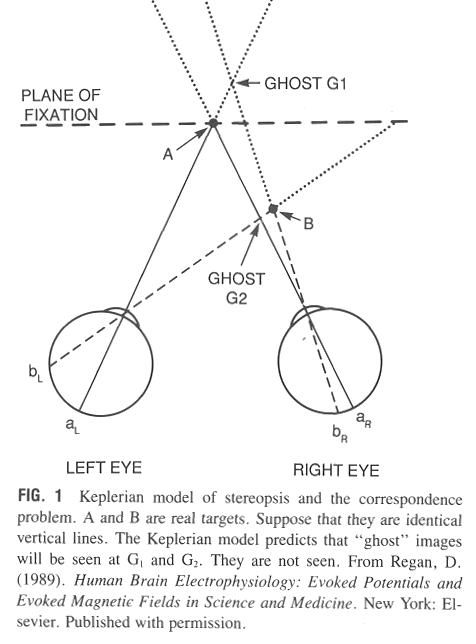


Next: Depth Illusion by Binocular
Up: Stereopsis and Perception of
Previous: Stereoptical Vision and Depth
It is obvious that the depth can be perceived by binocular disparity based on
the angles formed by objects and their images on the two retinas. However, when
the scene is more complex than a single point, we have to make the assumption
that prior to depth computation a one-to-one correspondence relationship
between the two sets of points on the retinas is established, which may not be
a trivial process. One suggested approach is to assume that the objects in the
scene are first recognized before the corresponding parts or points can be
identified and matched. The following three-step procedure for depth perception
is just based on such an assumption:
- Analysis of the shape/recognition of the objects;
- Identification of corresponding parts (points, edges, etc.) of the
objects on the two retinas;
- Depth perception of the object, by neurons tuned to different binocular
disparities of the corresponding parts.
But this suggested procedure has some serious challenges. For example, as
illustrated in the figure, two identical objects (e.g., points or vertical
lines for simplicity) project two identical images on each of the retinas.
However, the rays projected outward from these two pairs of images form
four intersections, two of them are the actual objects, while the other
two are ghost objects that do not exist. Or, equivalently, we have two possible
solutions, one real, one ghost. But these ghosts are never seen. How does the
visual system know what are real and what are not?

This correspondence problem is more generally illustrated by the random-dot
experiment (Julesz 1971) as demonstrated by this
web demo.



Next: Depth Illusion by Binocular
Up: Stereopsis and Perception of
Previous: Stereoptical Vision and Depth
Ruye Wang
1999-11-10

